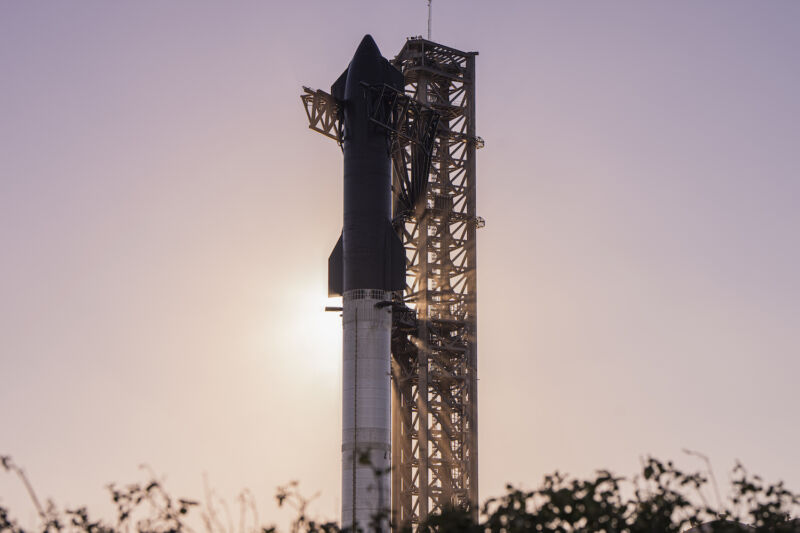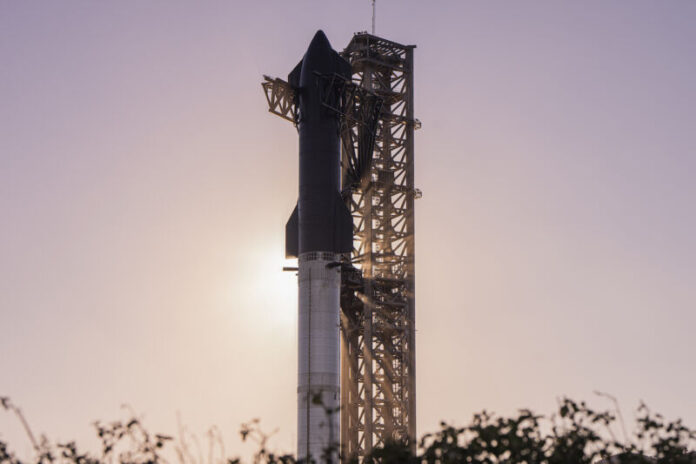
Enlarge / SpaceX's Starship rocket on a launch pad in Texas awaiting liftoff on a test flight. (credit: SpaceX)
NASA managers are in South Texas this weekend as SpaceX prepares to launch its second full-sized Starship rocket. If the rocket flies perfectly, it will unlock additional tests beginning as soon as next year to prove that SpaceX can transfer hundreds of tons of super-chilled methane and liquid oxygen between two spaceships in orbit.
This is a fundamental part of the architecture SpaceX has designed to fly Starship missions beyond low-Earth orbit. With two NASA fixed-price contracts valued at more than $4 billion, SpaceX is on the hook to develop and fly two human-rated lunar landers based on the Starship design (and likely many more missions, assuming these first two work as advertised).
Depending on who you ask, SpaceX may need to launch a dozen or more refueling tankers to fill up the methane and liquid oxygen tanks on the Starship lunar lander, which will have emptied its tanks just to get into low-Earth orbit following launch on top of a Super Heavy booster. The Starship lander will use this fuel to boost itself out of low-Earth orbit toward the Moon, descend to the lunar surface with astronauts, and climb back into space to deliver the crew to their Earth return vehicle—an Orion spacecraft.
Read 46 remaining paragraphs | Comments
Ars Technica - All contentContinue reading/original-link]




